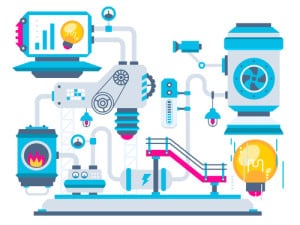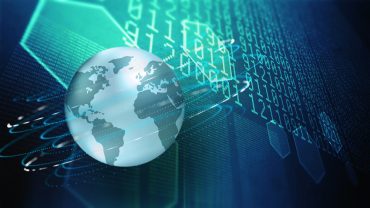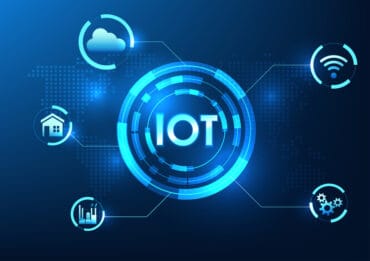
Our recent webinar with PTC explored how remote monitoring is transforming business models by putting analytics front and center of all processes.
Today’s industrial enterprises are awash with data, both tapped and untapped, flowing from machines, sensors, applications and people.
Much of this data is powering and will power the connected factory of the future, but it’s a matter of determining what data is of value to the business and being able to take action on it. In the process, the very nature of the business itself will change.
The untapped and tapped potential of intelligent remote monitoring data was recently explored in an insightful webcast featuring Ed Cuoco, VP analytics at PTC, and Les Yeamans, founder and executive editor of RTInsights, who looked at the ways that remote monitoring is transforming business models by putting analytics front and center of all processes—from customer interactions to internal operations to profitability. “Intelligent remote monitoring is an exercise in the collection of data,” Cuoco explained. “It is an exercise in the contextualization and synthesizing of that data, and it is an exercise in presenting that data in a way you can orchestrate action and drive behavior.”
Remote monitoring essential to digital transformation
Ultimately, the data analytics revolution is reshaping the business models of the manufacturing sector, and intelligent remote monitoring is the essential foundation for this transformation, said Cuoco. Traditional remote monitoring focuses on such nitty-gritty requirements as predictive maintenance, time to failure and anomaly detection. Increasingly, it will transform the look, feel and purposes of the factory. “It begins the evolution of the underlying business model, from a manufacturing model from which we produce a ‘thing,’ to a full-service business model from which we produce a set of outcomes,” he said.
For example, “a jet manufacturer will re-articulate its business model to producing hours of thrust, or a large manufacturer will talk about the capabilities of machines on a factory floor. If you wish to be moving in that direction, you are going to have to begin with robust remote monitoring that can be done at a scale that can be done at real-time and can meld itself with advanced analytics.”
Surveys show the era of the connected smart factory has only just begun, and there are high hopes. Yeamans pointed to a recent Capgemini study that showed 76% of manufacturers have launched smart factory initiatives, and, on average, expect seven to 13-fold boost in performance. However, he adds, “things aren’t as rosy as they sound, because only about 14% are satisfied with their success to date.” Only about six percent of the industry executives in the survey were at a level in which they were excelling at new initiatives such as IoT, AI and advanced robotics.
Putting value, versus collection, first
The best way to achieve such digital mastery is to put business value first, versus data collection for data collection’s sake, Cuoco adds. “Companies that are leveraging effectively are not beginning with a set of techniques. They are beginning with a business problem,” he says. “Wisdom is not found in simple logic, but is found in understanding your business.” He emphasized the risk of “failing to differentiate between the collection of data for its own sake versus the collection of data for value.” The so-called DRIP dilemma – “data rich, insight poor” – comes into play in intelligent remote monitoring as well. “Intelligent remote monitoring can go sideways when you’re only collecting what you need for that use case, or you just begin streaming as much data. Storage is cheap. In the end, there’s nothing wrong with having historical data, But it has to be understood — simply streaming it for just visualization, just another dial on the dashboard, you can generate a lot of heat, but very little light.”
Analytics paves the way to generating actionable insights from the data being delivered from systems, sensors and other sources. “The more intelligence you can build into the system, the more business value you generate,” said Yeamans. “As you move from basic connectivity, and visibility to predictive and autonomous capabilities, the more you need to thoughtfully and intelligently apply the technology.”
In realizing value from data, it is important to remember “there is no real separation between real-time intelligent remote monitoring and analytics,” Cuoco continues. “This is inherently an analytics exercise. It is part of a suite of analytics capabilities that a smart connected factory or smart connected operations must have. At the end of the day, it is both part of an output and an input, which is to say intelligent monitoring is not only delivering and driving insight, but it is also creating new and abstracted data that is being used to understand things at an even lower level.”
Cuoco and Yeamans also discussed the infrastructure and systems needed to supports intelligent remote monitoring. “There’s a lot of basic infrastructure that is needed with the connectivity and the integration of the different technologies and the different parts of the factory floor,” says Yeamans. “Bringing the machines that are a lot older and don’t use any standard formats — you really want to do this effectively, you can’t have any dark spots. There’s a lot of connectivity needed.”




























